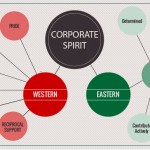Achieving and managing performance in coffee shops: The Starbucks experience

Starbucks is a universally familiar brand of coffee and coffee shops spread around the world. Its undeniable success and worldwide recognition has been building up since its inception in 1971, providing fresh-roasted whole bean coffees. At present, with a record of over 18,000 stores in 62 countries, the famous coffee corporation strives to maintain its acknowledged quality in every store. Consequently, it takes great care of its customers, employees and suppliers.
Customers are offered an impressive and ever-changing range of coffees, provided by hard working, happy employees. This employee satisfaction is due to the way they are treated and the opportunities they have within the company.
Starting with 1991, Starbucks CEO Howard Schultz implemented the Bean Stock plan, allowing full-time or part-time employees for over 6 months to buy stocks. Moreover, all Starbucks employees are referred to as partners, which makes them feel significant and genuinely engages them in their work.
At the beginning of their career at Starbucks, partners receive 24 hours of classroom training, having the opportunity to choose some areas of their own interest, like retail skills or customer service. They are also provided with outside opportunities, like professional seminars and workshops, paid by Starbucks.
Apart from customer and employee care, Starbucks also cultivates a healthy relationship with coffee and tea suppliers, through the Farmer Support Centers, helping farmers with crops productivity and quality.
In order to maintain business areas active and to continue improving them, Starbucks needs to gather data to monitor changes and successful or questionable practices. Starbucks’ Global Responsibility Report, Goals and Progress 2012, includes 6 categories of KPIs in the Global Reporting Initiative Performance Indicators:
- Economic Performance Indicators
- Environmental Performance Indicators
- Labor Practices and Decent Work Performance Indicators
- Human rights Performance Indicators
- Society Performance Indicators reviews and/or impact assessments
- Product responsibility Performance Indicators
![Starbucks_KPIs[1] Starbucks](https://www.performancemagazine.org/wp-content/uploads/2013/12/Starbucks_KPIs1.1.jpg)
Each of these categories includes numerous KPIs, and next to them, full, partial or empty circles indicate the level of data reported for each of them. The disadvantage is that they are not fully standardized, according to their unit type (%, #, $), which would contribute to a more efficient data reporting and understanding.
To conclude, Starbucks seems to have a good grasp of performance management and careful consideration of all business areas, which contributes to their global success, along with their exquisite products.
Maximize your KPI knowledge
Starbucks’ success can easily be attributed to the way in which they handle data management, specifically KPI usage, which allows them to accurately measure and analyze their performance.
If you want your business to follow the same path to success and never have to worry whether you have the right data, The KPI Institute offers a wide array of dictionaries, research reports and training courses, for numerous industries and functional areas, which will give you the necessary knowledge to make the best possible use of your KPIs and performance data.
In addition to this, our KPI Practitioner Certification provides you with in-depth information on all there is to know about KPIs and how to best manage them, whilst smartKPIs.com represents our knowledge library, for anyone who is interested in finding the right KPIs for their organization, boasting over 20,000 researched & documented KPIs!
Image sources
- Chairman Media
- Taylor, B. (2012), Global Responsibility Report Goals & Progress 2012, Year in Review: Fiscal 2012

Tags: Management performance, Report Analysis, Starbucks




